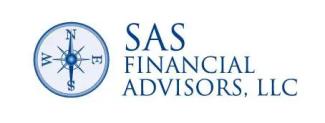Predicting the future and economic recovery
Last week, the SAS newsletter highlighted recency bias and how current events have a lasting persistency in our decision making framework. It's a human bias to have a blind spot for anticipating better or worse times, different than today's conditions. This week we jump in with some economic outlooks on the future.
Economic Outlooks
Economists love to predict the future. They are correct 50% of the time. We just do not know which 50% are correct. Along the same line economists use letters to predict the economic future. The letters V, U, W and K have been used to describe predictions in regard to the economic recovery from the Pandemic recession. V would be the most optimistic with a sharp decline and sharp recovery. U describes a sharp decline, a bumping along the bottom for a time and then a sharp recovery. W represents a double dip recession and double top recovery. K portrays a two tiered recovery with severe divergence between those who recover quickly and everyone else.
Not being an economist, I have to confess, does not prevent me from observation and prediction. I too have the same odds of being correct. I see a K shaped recovery.
What is a K shaped recovery? The K shaped recovery creates an environment where a portion of businesses and sectors experience relief and recovery while the rest of the population sees a continued downward trend in the economic effects of the pandemic. It is similar to what we experienced in 2008. Not everyone experienced recovery in their own ecosystem, or they did on a much longer timeline than others. Employees in technology, remote work enabled professions, retirees with pensions and investments, online sellers or those working for employees of companies with heavy online presence being the top of the K and everyone else on the bottom end of the K. My thought is that those who will experience the longest timeframe for recovery includes front line workers such as teachers, food service, healthcare workers, leisure workers, and restaurant workers. With the prevalence of Covid-19 greater in communities of color and lower-income neighborhoods, we have a much larger bottom of the K than the stock market would indicate.
Federal Reserve
In terms of the future this means that fiscal intervention is required in a big way by Congress and the White House in order to avoid the K morphing into a W. So far, after the CARES act, nothing. The Federal Reserve has promised to do anything necessary to prevent a prolonged recession but their tools are limited. The Fed meets this week and will talk more about the change in policy in regard to inflation and interest rates. Often, all the Fed has to do is announce their plan without ever acting on them. This is risky as much of the economy is based on trust. Germany just passed a law to guarantee income to employees until the end of 2020. This is costly and adds on to already historic costs, but they have determined the consequence of inaction is greater.
Wildfires
We have not gone outside for 4 days. Fortunately the majority of the smoke from the California wildfires has dissipated, but the fires still continue their burn on the West Coast. Not being able to go outside has been the worst for us but far less severe than our homes being at risk like much of the West Coast. Climate change and global warming and hitting us where it hurts. The short term solutions for this long term problem are limited. Forward looking companies including financial institutions have working groups addressing the impact of climate change on their business. Will we be up to the task? Time will tell.
The last two weeks we had a modest correction in the stock market. The biggest gainers-same 5 stocks-had the biggest losses. This week begins with a gain in averages so far and then another turn.

